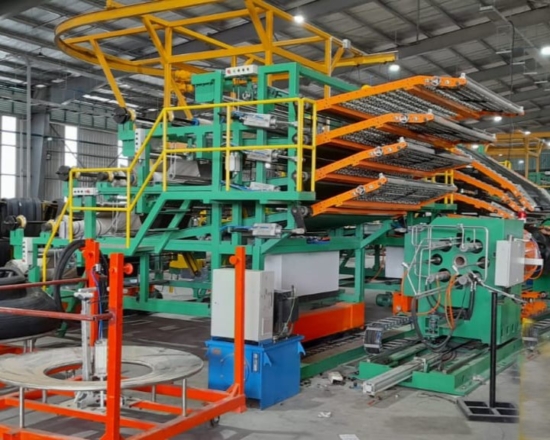GRI completes 2nd phase of specialty tyre plant expansion
 Phase 2 expansion lifts GRI’s daily capacity to 60t (Photo: GRI)
Phase 2 expansion lifts GRI’s daily capacity to 60t (Photo: GRI)
Phase 2 of a US$100 million production capacity upgrade at the GRI specialty tyre factory in Sri Lanka is now complete, and GRI reports being in a position to increase capacity by almost 100 per cent from the present level, up to a daily output of 60 tonnes. This elevated capacity will satisfy the increased demand for farm tyres that GRI has enjoyed since launching agricultural ranges across key markets such as Europe, the USA and Australia in 2018.
The 2021-initiated second expansion phase utilises a total footprint of 175,000 square feet or 16,250 square metres and includes eight new tyre building machines and 17 curing presses. GRI shares that the expanded plant uses state-of-the-art technology for real-time decision-making and machine optimisation.
Looking further ahead, GRI aims to lift production capacity to 750,000 tyres per year or 100 tonnes daily. It will achieve this in phase 3 of the expansion project, which is currently underway and once finished will result in the plant growing by 220,000 square feet or 20,450 square metres. When all three phases are complete, GRI expects that the entire expansion project will have led to the creation of more than 500 new jobs.
Providing customers with growth opportunities
“We are proud to have received such encouraging levels of customer acceptance for our radial as well as bias agriculture tyres, which we present to the international markets we operate in as our Green XLR and Green EX brands,” says Dr Mahesha Ranasoma, chief executive officer of GRI. “As a result of this expansion, we are now able to double our current volumes and provide our customers the opportunity to grow their businesses. We are also happy to be serving Sri Lanka by creating employment opportunities through this expansion while generating much-needed foreign earnings and export revenues for the country.”
The tyre maker adds that the significant ramp up of production capacities has also been supplemented through a “rigorous focus on sustainability-led production initiatives.”



Comments